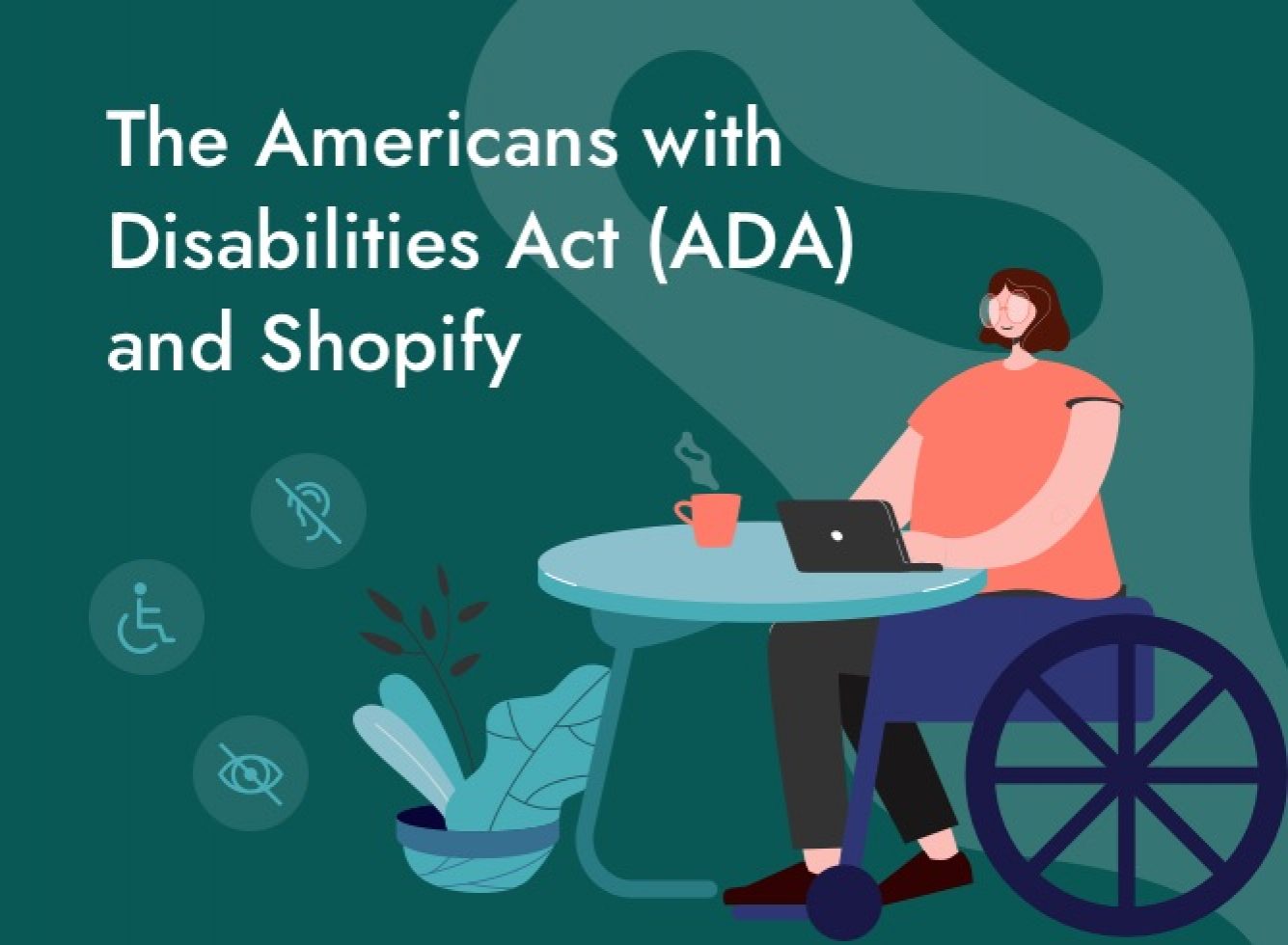The Americans with Disabilities Act (ADA) & Shopify

Failure to be Shopify ADA compliant is leading to an ever-growing number of lawsuits, mostly for businesses that simply don’t know any better. But with ecommerce now being one of the primary targets for ADA legal action, the time is now to make it a priority. Shopify doesn’t come with accessibility elements out of the box, but it’s something that merchants can address with the help of a Shopify development company.
Understanding ADA & How it Applies to Digital Spaces
Signed back in 1990, ADA is a civil rights law that’s aimed at preventing discrimination against people with disabilities in the United States. Due to the fact that many businesses now have an online presence, ADA compliance has expanded from physical establishments like restaurants, hospitals, and schools to anything people can interact with including websites, online stores, and apps.
There are 61 million Americans and a 1 billion people around the world currently living with a disability, which can be physical, visual, cognitive, or auditory. In addition to this, up to 71 million US citizens will be aged over 65 by 2030. ADA was signed into law as a way to improve the lives of all these individuals, which now includes online too.
The Laws & Guidelines Supporting ADA
The CVAA (21st Century Communications & Video Accessibility Act) came into effect in 2010. The goal of this law was to bring the accessibility laws that were enacted before the turn of the millennium up to date with 21st century technologies, including new digital, broadband, and mobile innovations.
The Web Content Accessibility Guidelines (WCAG) — created by the World Wide Web’s Consortium Website Accessibility Initiative (W3C WAI) — was introduced to make it easier to understand how websites can be made more accessible for disabled people.
WCAG Levels
Level A Compliance
Level A compliance is the basic/first level, which only covers absolutely necessary accessibility features, including:
- The creation of content that can be presented in different ways. For example, multiple layouts, alternating sensory characteristics, different reading sequences, and so on.
- Ensuring standard content functionality via keyboard controls without the need for a mouse.
- Presenting content in a logical, structured way and allowing users control when it comes to moving content. For example, pause, hide, and stop.
- The ability for people using the read-aloud feature to skip content. It means users can skip things like menus and logos, and get straight to the main content.
Level AA Compliance
This intermediate level is considered the sufficient level of ADA compliance. It includes everything from level A compliance with additional accessibility features for disabled users including:
- Enabling captions for live videos.
- Ensuring text is resizable by 200% without losing features or page content.
- Implementing headings and subheadings appropriately for better readability.
- Notifying users of any language changes on a page.
- Providing consistent navigation functionality in terms of location and order on every page.
Level AAA Compliance
Level AAA is the most advanced level of accessibility compliance. It includes all the elements from level AA compliance, plus the following:
- Ensuring there’s a minimum contrast of 7:1 between text and the background.
- Offering users various presentation options, which enable them to select from optional views. For example, colour contrast or an alternative simplified layout.
- Disabling any time limits to ensure content never expires or becomes unavailable for certain time periods.
- Giving users sufficiently detailed help and instructions where applicable. For example, forms.
How to Make Your Shopify Store ADA Compliant
For your Shopify website to be classed as ‘accessible’, it needs to meet four key principles: perceivable, operable, understandable, and robust — often shortened to ‘POUR’. There are a few critical questions you should ask yourself to ensure your store is Shopify ADA compliant.
- Perceivable – Is your website’s UI and information presented in a manner that’s perceivable for everyone?
- Operable – Can your website reasonably be operated by people using assistive technologies?
- Understandable – Is your site’s UI and content understandable to disabled people?
- Robust – Is your website code up to date enough to ensure consistent interpretation and reliability for users and assistive technologies?
Additional Tips that Support ADA Compliance
Here are some great tips that will support your Shopify store being fully ADA compliant.
- Your business should be well informed on ADA law.
- Ensure your team is up to date on the latest compliance, including the requisite level of training.
- Issue an accessibility statement and designate an accessibility coordinator from the development department.
- Get in touch with different disability rights organisations. They’ll mostly be more than happy to provide constructive feedback on your website.
- Embed alt text tags on any new images, checkboxes, or text boxes.
- Make sure all video content includes subtitles.
- See to it that all audio content includes transcripts.
Ensuring ADA Compliance with Automated & Manual Audits
The best approach to ensure ADA compliance involves a three-factor audit that includes automated, manual, and assistive technology. Solely relying on an automated audit will be ineffective. That’s because even the best tools will miss up to 70% of WCAG issues since they’re very particular and down to some interpretation. To make up for this huge difference, manual and assistive technology testing (screen readers, etc.) of unique pages and templates is required.
In addition to this, get remediance guidance, including screenshots for every item. Through quality reporting, any false positives can be greatly reduced. A professional Shopify development company, which specialises in WCAG remediation will generally segment audit results by elements like task category and priority or severity. Thereafter, issues can fall into three main categories as explained below:
- Design issues – this includes aspects like colour, size, contrast, page structure, and spacing.
- Content issues – this includes elements like alt tags, heading structures (H1, H2, etc.), and video content captioning.
- Development issues – this includes the majority of issues identified in front-side code, which is the CSS/ HTML/ JavaScript layer.
Final Thoughts
The ins and outs of being compliant with the current accessibility requirements can be difficult to grasp. To ensure you do it right and avoid expensive lawsuits, you can turn to Shopify website accessibility experts like Vsourz. We stay up to date on all things ADA and have helped numerous Shopify merchants attain and maintain compliance.
To learn more about how to make your Shopify store ADA compliant, get in touch with our friendly team today.






